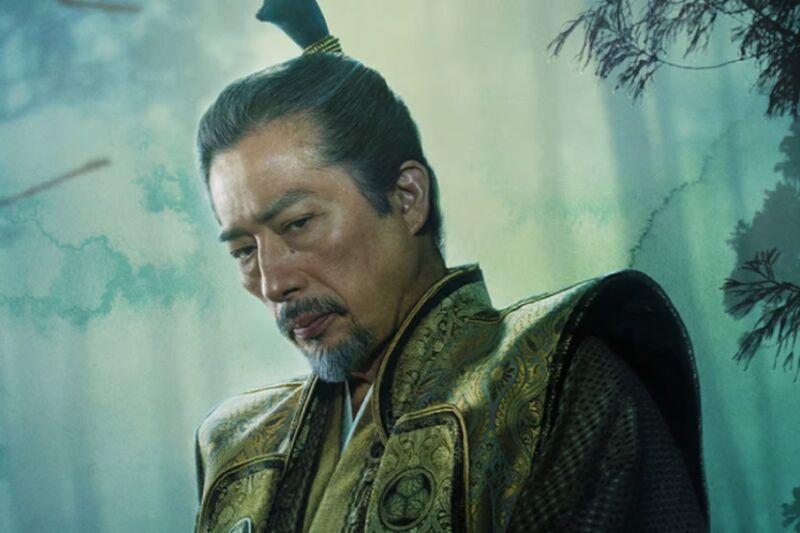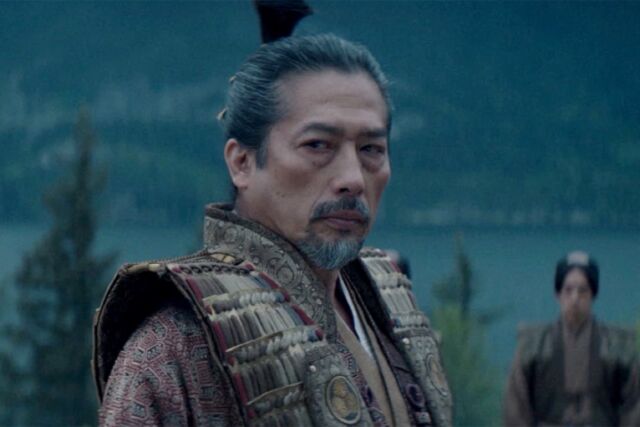
FX/Hulu
FX/Hulu’s new historical epic series, Shōgun, based on the bestselling 1975 novel by James Clavell, has met with both popular and critical acclaim since its February premiere, drawing over 9 million views across all platforms in the first six days alone. The storytelling, the characters, the stellar performances, the expert pacing all contribute to that success. But it’s also a visually stunning achievement that brings 17th-century feudal Japan to vivid life, thanks to masterful special effects that have been woven in so seamlessly, it can be challenging to distinguish between the CGI and the real footage.
The novel is a fictionalized account of the key players and events in 17th-century feudal Japan that ultimately led to the naming of a new shōgun (central ruler), Tokugawa Ieyasu, and the advent of the Edo period. The climactic event was the October 21, 1600, Battle of Sekigahara, in which Tokugawa defeated a coalition of clans led by Ishida Mitsunari. Clavell’s novel also includes a fictionalized version of an English navigator named William Adams, aka Miura Anjiin (“the pilot of Miura”), who was the first of his nation to reach Japan in 1600, eventually becoming a samurai and one of Tokugawa’s key advisers.
Clavell’s epic saga was a blockbuster success, selling over 6 million copies by 1980. The author changed the names of all the main characters, purportedly to “add narrative deniability,” and despite some inevitable inaccuracies and authorial liberties, the novel is breathtaking in scope, chock-full of encyclopedic period details. In fact, Shōgun is often credited with introducing an entire generation of Western readers to Japanese history and culture. “In sheer quantity, Shōgun has probably conveyed more information about Japan to more people than all the combined writings of scholars, journalists, and novelists since the Pacific War,” an editor named Henry Smith wrote in 1980.
It was also just a cracking good read and perfect fodder for the miniseries craze that hit broadcast TV in the late 1970s and early 1980s, driven by the runaway success of 1977’s Roots. A nine-hour miniseries adaptation of Shōgun ran over five nights in September 1980, starring Richard Chamberlain as John Blackthorne and Toshiro Mifune as Lord Yoshii Toranaga, the fictional characters based on Adams and Tokugawa, respectively. It, too, was a massive success, driving even more sales of Clavell’s novel, although the reception in Japan was far more negative.

FX/Hulu
Fast-forward to 2018, when FX announced that it had made a straight-to-series order for a new adaptation of the novel, created by Justin Marks and Rachel Kondo. This time around, Cosmo Jarvis (Peaky Blinders, Raised by Wolves) stars as Blackthorne, while Hiroyuki Sanada (The Last Samurai, John Wick: Chapter 4) plays Toranaga. It’s been described as “a Game of Thrones set in 17th century Japan,” although calling it a 17th century Japanese Godfather also captures the essence of the new series.
This new incarnation of Shōgun opens in 1600. Japan’s Taikō died the year before, leaving five regents equally responsible for protecting his heir until the child comes of age. Toranaga is one such regent, but his rival, Lord Ishido (Takehiro Hira), conspires with the other three to have Toranaga impeached, with the ultimate goal of double-crossing his co-conspirators, killing the child, and ruling himself. Meanwhile, Blackthorne’s ship, Erasmus, wrecks on the shore of the coastal village Ajiiro, where Portuguese Catholic priests try to turn the local samurai against the Protestant survivors.
Blackthorne finds himself embroiled in this hotbed of political intrigue when Toranaga takes a shine to him, envisioning a key role for the English pilot in Toranaga’s own secret machinations. There is a scheming local lord, Kashigi Yabushige (Tadanobu Asano) trying to play both sides; a charming Spanish sailor named Vasco Rodrigues (Nestor Carbonell, Lost) who befriends Blackthorne; and the alluring translator, Toda Mariko (Anna Sawai), who finds herself torn between her loyalty to Toranaga and his Catholic faith—not to mention a growing attraction to the foreign Anjin.
The responsibility for putting together all those seamless special effects fell to VFX supervisor Michael Cliett, whose extensive credits include Falling Skies, iZombie, Arrow, The 100, and Serenity. Cliett and his team spent a grueling three years agonizing over every historical detail. “It was all worth it, all the blood, sweat, and tears,” Cliett told Ars. “I’m so proud of the show and I’m so grateful at the reception that it’s gotten, the recognition of our hard work. I’m grateful to have been part of it.”




















+ There are no comments
Add yours